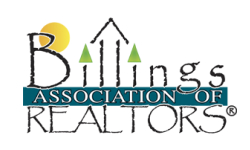"Luckily I have never needed to use a restoration company, but as someone who has worked closely with Alpha Omega, they have treated my clients very well, and have always been honest and very transparent. Although their whole team is very professional and punctual, Carissa and Sonya have been great to work with."
Does Your Church Have an Emergency Preparedness Plan?
If you’re a Montana resident who likes going to church every week, you might go for that feeling of safety and security and community. Being prepared for an emergency might never cross your mind. Church emergency preparedness tends to get forgotten because churches are seen as a sanctuary where things can’t possibly go wrong.
But what if a tornado hits or a fire occurs in your church? Severe weather events can show up without warning. Is your church and congregation prepared to act safely and quickly? Follow these tips to create an emergency preparedness plan to keep your congregation safe.
What Is a Church Emergency Action Plan?

A church emergency action plan is a document that answers the what, where, why, and how of what to do in case of a natural disaster or emergency situation. It’s important to be as specific as possible in this plan so that there are no questions left unanswered in the moment you need a plan most. In the plan, you want to have key information, including:
- Assigning a designated meeting place near the church, but far enough from it to be out of harm’s way
- Providing a communication list, including but not limited to local police, fire, gas and electric companies, and local emergency restoration companies and contractors.
- Assigning leadership roles to people in all parts of the church to be able to regroup and hire the right people to help clean up, board up, repair, and rebuild the church after the disaster has passed.
How Do You Write an Emergency Response Plan?
The good news in all of this is creating an emergency response plan doesn’t need to be complicated. Follow these easy steps to create a plan:
1. Download a church emergency action plan template. Use this emergency response plan template based on best practices by FEMA to help you start your plan.
2. Do a risk assessment. Conduct regularly scheduled assessments of your church. Walk around your church’s property with people from your designated leadership team and show them what to look out for. This includes blocked emergency escape routes, broken windows or doors, and fallen debris. Make sure to clean up, fix, and update your church on a regular basis to ensure everyone’s safety.
3. Know your local problems and common natural disasters. Make sure you are always preparing and working ahead of issues common to your city, county, and state. If you live in an area where the power frequently goes out, make sure your church has a generator. If you live in an area that has multiple tornadoes every year, make sure your church has a tornado shelter (or safe spaces) big enough for your congregation, stocked with essentials like food and water. Make a list of all issues common to your area and work to have solutions for each one. Beyond the more obvious risks, FEMA also recommends creating a general preparedness plan for other events that are more unexpected.
4. Write your emergency response plan.Based on your assessment, the local laws, and the emergency response plan template, you should have a solid base on where to start. Your plan should include as much information as possible when it comes to safety. Where will people shelter-in-place? What’s the evacuation route? Who is in charge of the process? How will you communicate with everyone in the church, and those affiliated with it, when the disaster happens? Once filled out, make copies of your plan and visibly place it in multiple spots so it’s accessible, especially during an emergency situation.
5. Practice your church emergency plan. It’s important that everyone understands how to execute your plan, because when disaster strikes, the first instinct most people will have is panic. Assign employees important roles and make sure that everyone knows exactly what they’re supposed to be doing. Conduct emergency drills multiple times a year to increase employee confidence and understanding so that if a natural disaster hits, they will be able to follow the plan in a calm and quick way.
Your Best Protect Against Losing Your Data
After you’ve created and implemented a way to protect your employees during natural disasters, the next priority should be in protecting your data, business and product. If necessary, be prepared to take whatever you need to keep business up and running, including files and hard drives. Typically, keeping backup files and data in a different location off sight is the best plan of action.
Use Alpha Omega for Your Church Emergency Preparedness
Contact Alpha Omega Disaster Restoration. With 24/7 emergency response availability, we are there for you to help assess the situation, mitigate the damage, and make a plan to restore your rental property back to pre-loss condition. We will help you recover from commercial fire damage. Our professional team of certified, trained, and trusted advisors are experts in the fire damage restoration industry. We will oversee your property’s damage recovery with honest, reliable, high-quality work so your tenants can go back to their normal lives, quickly.
Alpha Omega is the leading disaster restoration company serving commercial and residential properties in Billinngs,MT and surrounding areas.












